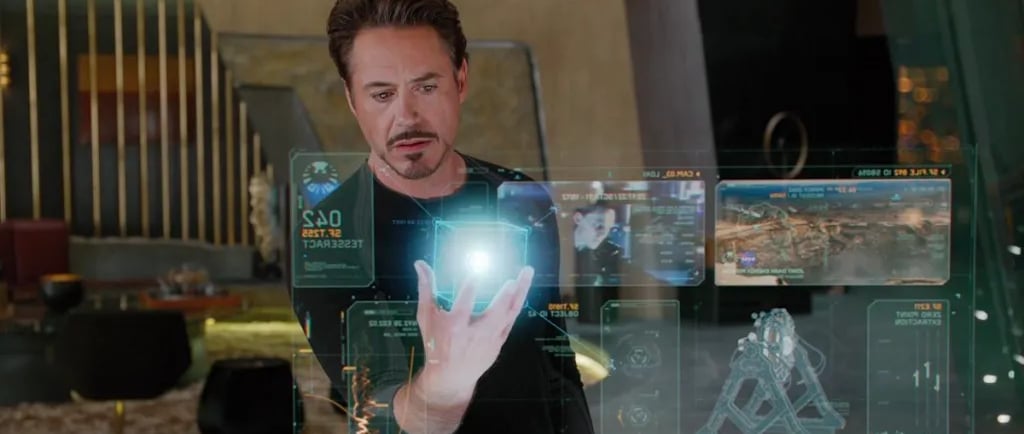items chosen one by one so you have the best option and save money on amazon (Links in articles)
The Rise of Holographic Displays: What to Expect by 2027
Introduction The future of screens is no longer flat. Holographic displays — once confined to science fiction and research labs — are quickly becoming a commercial reality. As major tech players push the limits of 3D imaging, 2027 is shaping up to be the breakthrough year for real, interactive holograms. In this article, you’ll learn how holographic display technology works, which companies are leading the charge, and what exciting products and use cases you can expect to see in the very near future.
5/17/20252 min leer


🧠 What Is a Holographic Display?
A holographic display creates a three-dimensional image that appears to float in space — no headset or glasses required. Unlike traditional 3D or AR, holography uses light diffraction and laser-based projection to render full 3D visuals that can be viewed from multiple angles.
These displays can be:
Volumetric (3D pixels in space)
Light-field based (simulating depth through multiple perspectives)
Laser plasma (drawing pixels in the air with lasers)
📈 Why Holographic Displays Matter in 2027
Several trends are converging to make 2027 a tipping point:
TrendImpact on Holographic AdoptionFaster processorsReal-time rendering of complex 3D visuals5G and Wi-Fi 7Seamless high-bandwidth streamingAI visual enginesSmarter rendering and interactionLower hardware costsConsumer-grade holographic devicesMetaverse infrastructureDemand for immersive display technologies
🚀 Top Holographic Technologies Emerging by 2027
🔹 1. Looking Glass 3D Portrait Systems
Real-time 3D portraits from smartphone cameras
No glasses, no head tracking
Developer kits for Unity and Unreal Engine
Perfect for remote meetings and product demos
🔹 2. Voxon VX1 Volumetric Display
Renders full-color voxels in mid-air
Great for education, medical imaging, and 3D design
Displays at 30 volumes/sec
Already in use in universities and hospitals
🔹 3. Sony Spatial Reality Display
Eye-tracking for ultra-realistic depth
4K resolution and sharp 3D visualization
Ideal for automotive design, architecture, and media
💼 Industries Being Disrupted
Holographic displays are already finding use across industries:
🏥 Healthcare
3D imaging for surgeries and diagnostics
Holographic anatomy lessons in med schools
🎓 Education
Interactive learning with 3D historical reconstructions
Virtual science labs powered by holography
🛍️ Retail
Holographic product displays in smart stores
Virtual fitting rooms with real-time rendering
🎮 Gaming & Entertainment
True 3D gaming with spatial interactions
Live concerts with holographic performers (e.g., Hatsune Miku 2.0)
✈️ Aerospace & Defense
Mission planning with 3D terrain and object mapping
Holographic control panels in next-gen aircraft
🔮 What Will Holographic Displays Look Like at Home?
By 2027, early consumer holographic devices will begin appearing in:
Smartphones with built-in light-field displays
Desktop holographic monitors for gaming and design
Home hubs with voice-controlled 3D interfaces
Companies like Apple, Meta, and Samsung are rumored to be working on mixed reality hubs that include holographic projection features for navigation, video calls, and smart home control.
🧩 Holography vs. AR/VR: What’s the Difference?
FeatureHolographyAR/VRHardware NeededNone (naked eye)Headsets, gogglesViewing Angle360° possibleLimited by headset rangeImmersion TypePhysical light projectionVirtual overlaysFatigue FactorLowModerate to highBest Use CaseDisplay and interactionImmersive environments
In short, holography complements rather than replaces AR/VR — but its frictionless user experience gives it a major edge for everyday use.
❓ Frequently Asked Questions
Will holographic TVs replace flat screens?
Not in the short term. But by 2027, we expect holographic displays to supplement traditional screens, especially for gaming, video conferencing, and immersive content.
Do holographic displays require glasses?
No. That’s the major appeal. Technologies like light-field projection and volumetric rendering are designed for glasses-free viewing.
Are these displays safe for the eyes?
Yes. Unlike VR headsets that sit close to the eyes, holographic displays use natural light angles, reducing strain and fatigue.
How much do holographic displays cost?
As of 2025, professional units range from $1,000 to $5,000. By 2027, consumer versions under $1,000 are expected to reach the market.